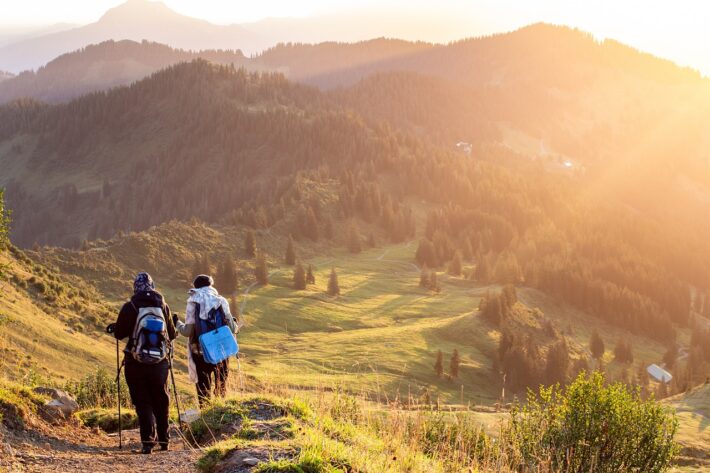Spain is a country of rich and diverse landscapes, ranging from sun-kissed beaches to towering mountains and lush green forests. With its varied geography, Spain is home to some of the most beautiful natural wonders in the world, many of which are protected by its national parks and natural reserves. Whether you’re a nature lover or simply looking for a break from the city, Spain’s national parks and nature reserves are the perfect destination for a unique and unforgettable experience.
Here are some of Spain’s most stunning national parks and natural reserves that you should add to your travel itinerary:
- Doñana National Park
- Sierra de Guadarrama National Park
- Picos de Europa National Park
- Spain National Park: Teide
- Aigüestortes i Estany de Sant Maurici National Park
- Garajonay National Park
- Spain National Parks: Sierra Nevada
- Ordesa y Monte Perdido National Park
- Cabañeros National Park
- Spain National Parks: Monfragüe
- Sierras de Cazorla, Segura y Las Villas Natural Park
- Archipiélago de Cabrera National Park
- Spain National Parks: Timanfaya
- Spain National Parks: Tablas de Daimiel
- Caldera de Taburiente National Park
- Islas Atlánticas National Park
- Spain National Parks: Sierra de las Nieves
Doñana National Park

Doñana National Park is one of the largest and most important wetlands in Europe and is a haven for a diverse range of wildlife, including rare and endangered species like the Iberian lynx and Spanish imperial eagle. This Spain National park is home to a unique landscape of sand dunes, marshes, and forests, which provide the perfect habitat for a variety of plants and animals. Visitors can explore the park by foot, bike, or horseback, and there are also several viewing platforms and birdwatching stations where you can observe the local wildlife.
Sierra de Guadarrama National Park
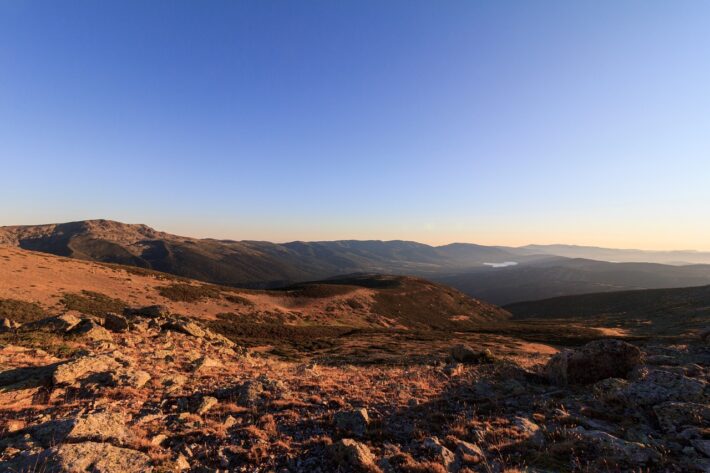
The Sierra de Guadarrama is part of the Sistema Central, a 500 km-long mountain range that crosses the center of the Iberian Peninsula from east to west.
The cooler and wetter conditions of the Sierra, compared to the surrounding plateaus, and its lower level of human impact, have turned these mountains into a privileged biodiversity refuge. Its environment is characterized by glacial cirques and lagoons and granite rock formations. The highlights of this park are the high mountain ecosystems and the extensive forests of Scots pine, which are a paradise for hikers.
Picos de Europa National Park
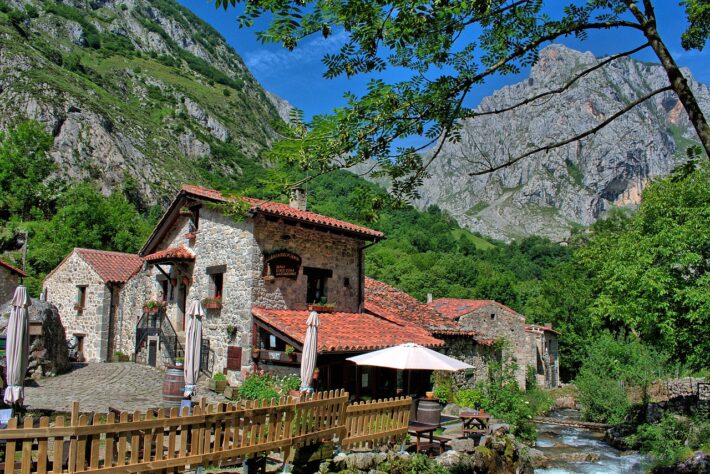
The Picos de Europa National Park is a breathtaking mountain range located in northern Spain. The park is home to a variety of landscapes that represents the ecosystems linked to the Atlantic forest, including rugged peaks, deep valleys, and dense forests, and is a popular destination for outdoor enthusiasts of all skill levels. Whether you’re a seasoned hiker or just looking for a scenic stroll, the Picos de Europa has something to offer everyone. Here we can find a huge variety of wildlife, including rare and endangered species like the Pyrenean ibex and the Cantabrian brown bear.
Aside from the natural beauty, the Picos de Europa also boasts centuries of history, written in the towns, valleys, churches, mountain huts, and trails throughout the area.
Spain National Park: Teide
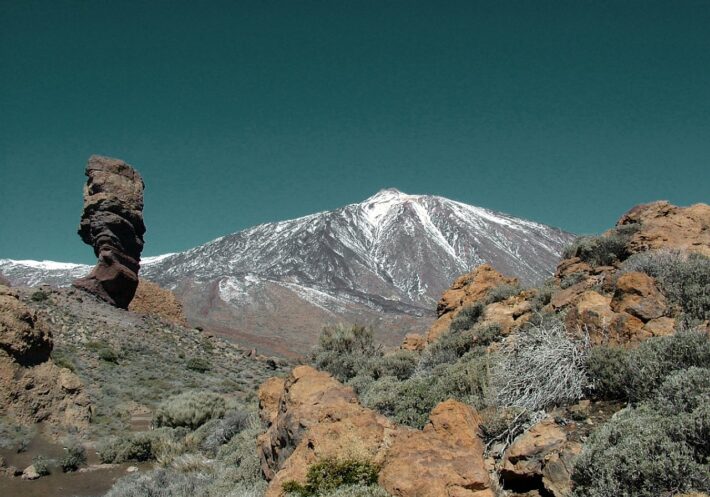
Located on the island of Tenerife, the Teide National Park is a stunning natural wonder that is home to the highest peak in Spain at 3,718 meters (12,198 feet). This park was established in 1954 and declared a UNESCO World Heritage Site in 2007. The park covers an area of over 18,000 hectares and is named after the Teide volcano.
The park’s landscape is characterized by the volcanic origin of the island, with a unique variety of flora and fauna that has adapted to harsh environmental conditions, like the Teide white broom, the Teide violet, the Blue Chaffinch or the Tenerife lizard.
One of the most iconic features of the park is, of course, the Teide volcano, which is one of the most visited tourist attractions in Spain. Visitors can take a cable car to the upper reaches of the volcano, where they can enjoy panoramic views. The park also offers a range of hiking trails that take visitors from volcanic craters to pine forests.
Aigüestortes i Estany de Sant Maurici National Park
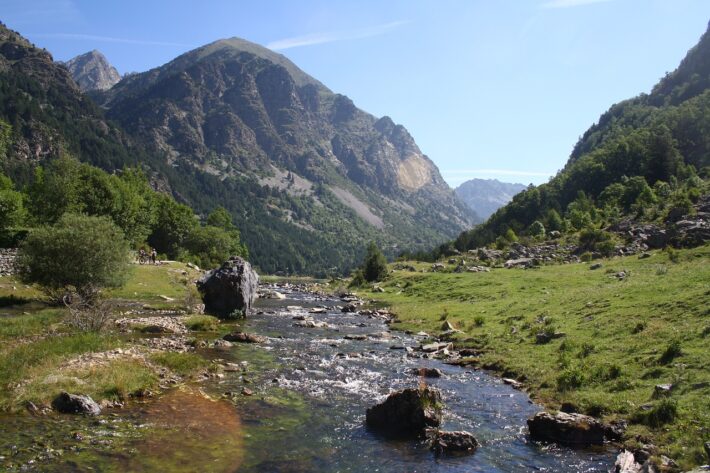
Aigüestortes i Estany de Sant Maurici National Park is a beautiful and pristine natural wonder located in the Pyrenees Mountains of northern Spain. The park is home to a variety of landscapes, including sparkling lakes, rolling hills, and towering peaks, and is a popular destination for hiking, camping, and other outdoor activities.
Its main hallmark is the over 200 lakes or ponds, the impressive cliffs of “Els Encantats,” and its characteristic high-mountain meanders (the aigüestortes). It is a true paradise for nature lovers: lakes, streams, waterfalls, peat bogs, gorges, rugged peaks, and lush forests of black pine, fir, wild pine, birch, and beech, are home to many interesting plants and fascinating animals of Alpine or boreal origin.
DISCOUNTS AND RECOMMENDATIONS FOR YOUR TRIP
✈️ Find the cheapest flights, train or bus tickets here.
🛏️ Get up to 15% discount on your hotel by booking here.
🏛️ Book the best tours and activities here.
🚗 Compare and rent a car at the best price here or hire your transfer here.
📖 Get your Spain travel guide here.
💚 Book your travel insurance here.
Garajonay National Park
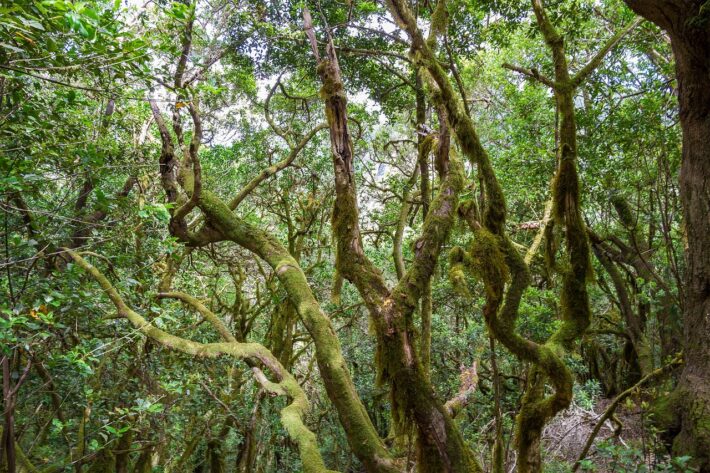
Located on the island of La Gomera in the Canary Islands, the Garajonay National Park is a stunning landscape of laurel forests. This ancient ecosystem, which dates back to the Tertiary Period and disappeared from the mainland due to climatic changes in the Quaternary, thrives in the moist and fresh conditions created by the mists from the ocean. The park is one of the best-preserved examples of this type of forest in the world, with over half of the mature laurel forests in the Canaries, and is a popular destination for hiking. The park also boasts a diverse collection of plant groups, many endemic species, and geological wonders like Los Roques.
Spain National Parks: Sierra Nevada
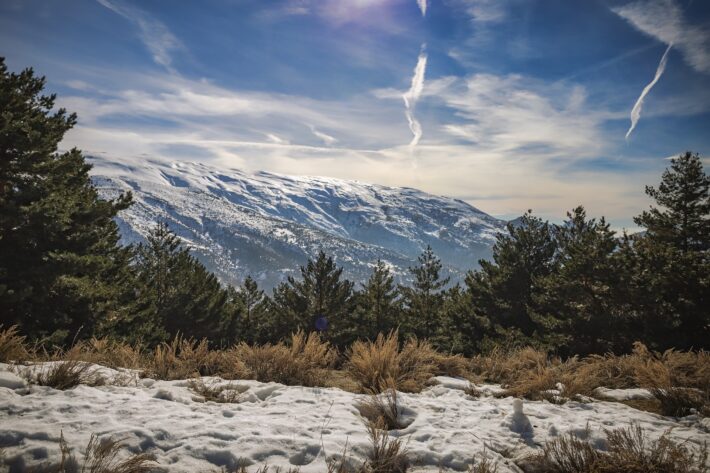
Sierra Nevada is a mountain range located in the southern Spanish region of Andalusia, and it is one of the highest mountain ranges in Europe. It includes the highest peak of the Iberian Peninsula, Mulhacén, which reaches a height of 3,478 meters (11,411 feet). The region is known for its stunning natural beauty, with a unique mix of Mediterranean and alpine landscapes that provide a home to over 2,000 plant species, including 66 exclusive to the region
Sierra Nevada is a popular destination for outdoor activities, including hiking, skiing, snowboarding, and mountain biking. The region also features a number of picturesque villages and towns, each with its own unique charm and history.
Ordesa y Monte Perdido National Park
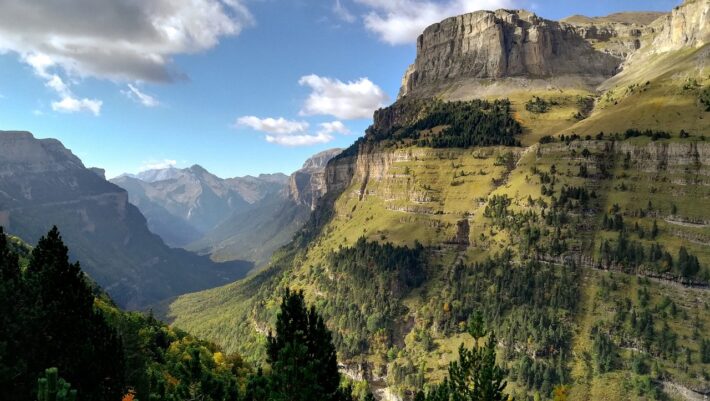
Ordesa is a magnificent corner of the Pyrenees, known for its natural and scenic beauty, dominated by the massif of Monte Perdido. The area is characterized by stark contrasts between the dry highlands and the green valleys, covered with forests and meadows, crossed by waterfalls, canyons, and ravines.
The need to protect the environment led to the expansion of the original National Park, which now covers 15,608 hectares, including the valleys of Añisclo, Escuaín, and Pineta, and the heights of Monte Perdido. Nowadays, this area is a Biosphere Reserve, a Special Protection Area for Birds, and a UNESCO World Heritage Site.
Cabañeros National Park
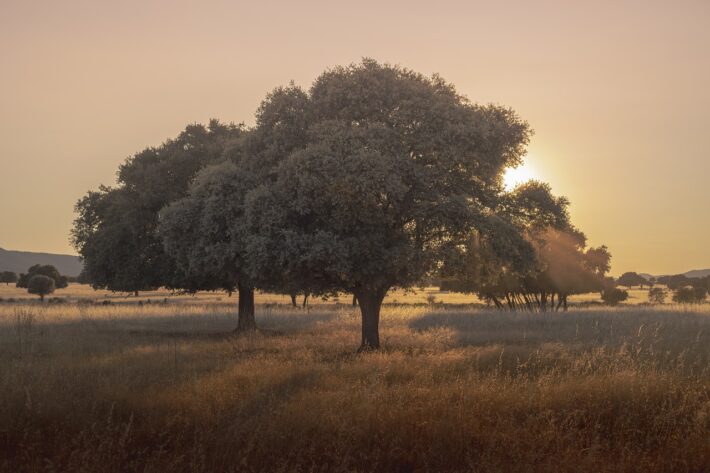
Cabañeros National Park is a stunning natural wonder located in central Spain. The Parque Nacional de Cabañeros in central Spain is one of the most valuable protected areas in the Montes de Toledo region. It covers an area of 40,000 hectares and was once threatened with becoming a shooting range. This area is home to many endangered species, such as large raptors, black storks, and others. The area has historically been characterized by depopulation and abandonment, making the creation of the National Park a significant milestone.
Spain National Parks: Monfragüe
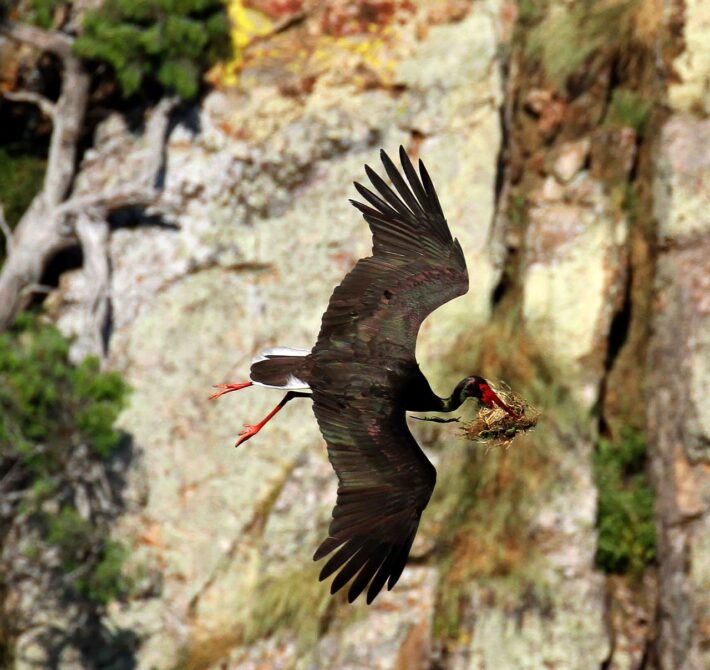
Located in the region of Extremadura in western Spain, Monfragüe National Park is a stunning natural wonder that is home to a rich and diverse landscape of forests, hills, and rivers. The park is renowned for its rich birdlife and is a popular destination for birdwatching, as well as for hiking and other outdoor activities. Visitors can explore the park by foot, bike, or on horseback, and there are also several scenic viewing platforms and picnic areas where you can enjoy the beauty of the surrounding landscape.
Sierras de Cazorla, Segura y Las Villas Natural Park
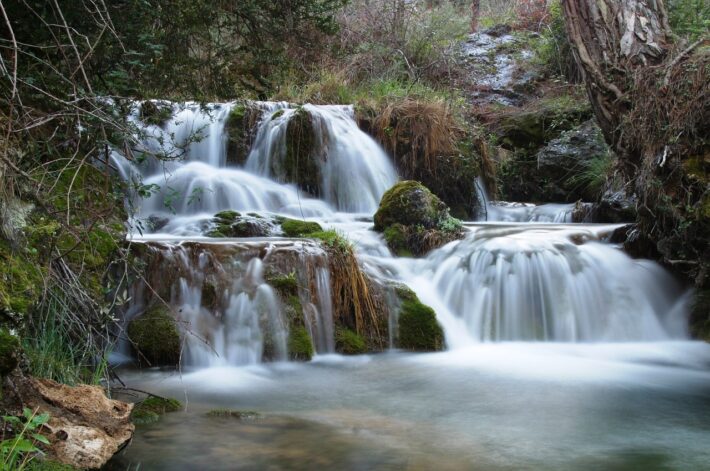
Sierras de Cazorla, Segura y Las Villas Natural Park is a breathtaking natural wonder located in southern Spain. The park is home to a variety of landscapes, including rolling hills, dense forests, and sparkling rivers, and is a popular destination for hiking, birdwatching, and other outdoor activities. Visitors can also explore the many historic sites and monuments within the park, including the remains of ancient monasteries and fortresses.
Archipiélago de Cabrera National Park
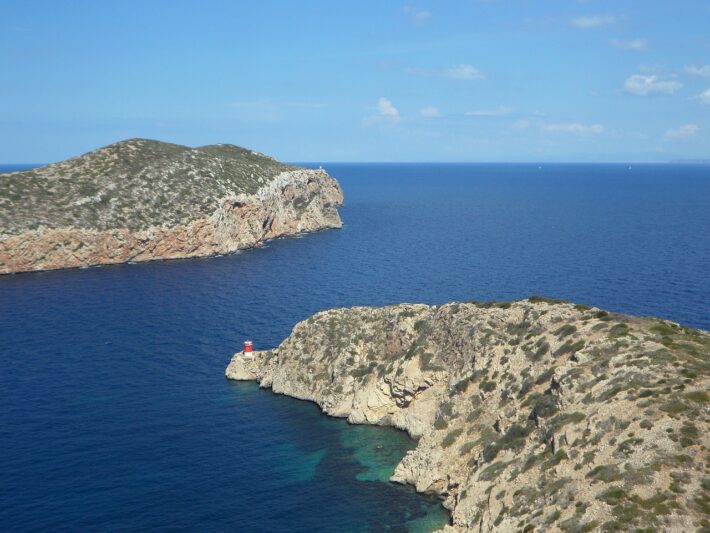
Located off the coast of Mallorca in the Balearic Islands, the Archipiélago de Cabrera National Park is a unique and breathtaking natural wonder that is home to a diverse landscape of rocky cliffs, clear waters, and lush green forests. The park is renowned for its rich birdlife and marine life, and is a popular destination for birdwatching or snorkeling, with over 200 species of fish.
This Spanish National Park represents the best example of unaltered Mediterranean island ecosystems in Spain. It houses significant colonies of seabirds, as it is an important stopping point on the migration route of more than 150 bird types, endemic species like the dragon’s mouth or the Balearic milkvetch, and one of the best-preserved marine beds along our coast.
Spain National Parks: Timanfaya
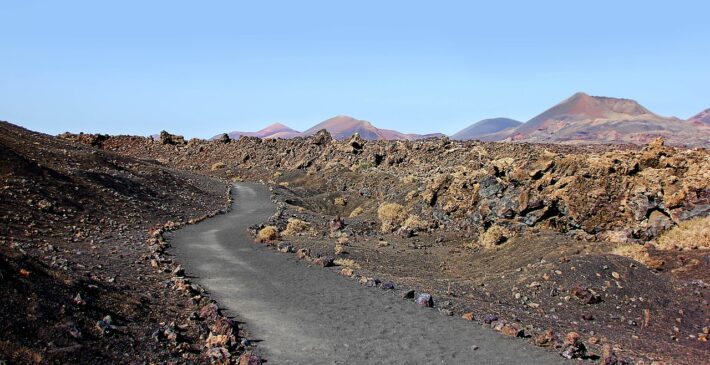
Timanfaya National Park is one of the most famous Spain National Parks in the Canary Islands. This is a protected area located on the island of Lanzarote that preserves the unique landscape formed by volcanic eruptions in the 18th century.
It covers an area of about 50 square kilometers and is characterized by a barren, otherworldly landscape of dark lava fields, volcanic cones, and craters. The park is often referred to as the “Fire Mountains” because of the intense heat that still radiates from the ground, creating an eerie and desolate atmosphere.
Nowadays, Timanfaya is a popular tourist destination, and visitors can explore the park on foot or by taking a guided bus tour. The park also features a restaurant where food is cooked using the heat from the volcanic ground. Additionally, visitors can witness geothermal demonstrations, including water being poured into a hole in the ground that is instantly vaporized by the intense heat.
Due to its unique landscape and geological features, Timanfaya National Park was declared UNESCO Biosphere Reserve in 1993. The park is also an important habitat for several endemic plant and animal species, including the Canary Islands spurge, the Lanzarote lizard, and the Houbara bustard.
Spain National Parks: Tablas de Daimiel
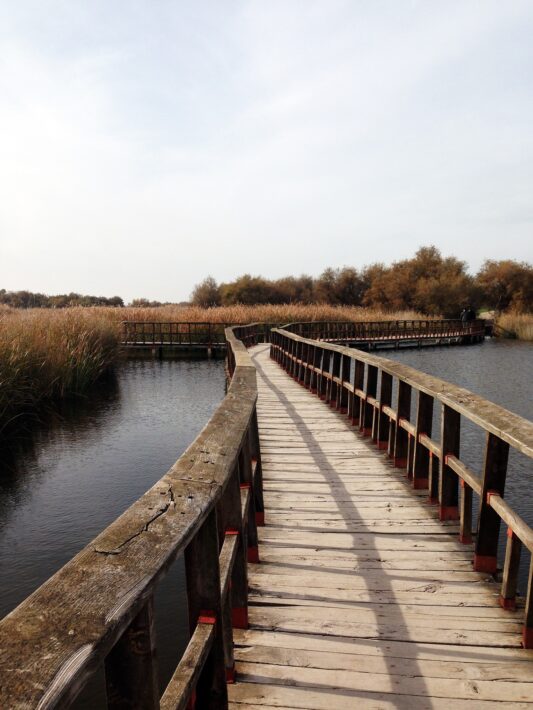
Tablas de Daimiel is a wetland located in the La Mancha region of central Spain, specifically in the province of Ciudad Real. It is a protected area since 1973 and was designated as a biosphere reserve by UNESCO in 1981.
The park is located at the confluence of two rivers, the Guadiana and the Ciguela, which provide a source of water for the wetlands. The area has a high degree of biodiversity, and it is particularly known for its birdlife, including a large population of white-headed ducks.
The Tablas de Daimiel has faced many environmental challenges over the years, including the over-extraction of groundwater, which caused a drop in the water table and threatened the wetlands. Conservation efforts have been implemented to restore the wetlands, including the construction of dams and artificial channels to regulate the flow of water, as well as reforestation efforts to stabilize the soil and prevent erosion.
Caldera de Taburiente National Park
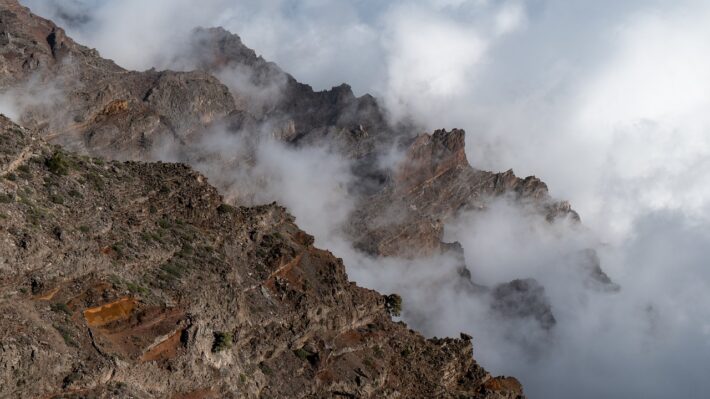
Located on the island of La Palma in the Canary Islands, Caldera de Taburiente National Park is a breathtaking natural wonder that is home to a surreal landscape of towering peaks, deep valleys, and sparkling rivers. It has a circular shape of 8 km in diameter that resembles a “caldera” or pot. Multiple volcanic eruptions, landslides, the erosive power of water, and time have molded its geomorphology into a rugged landscape with nearly 2,000 m of elevation difference. A vast variety of plant and animal species, including a large number of endemic Canarian species, have thrived in this environment.
Islas Atlánticas National Park
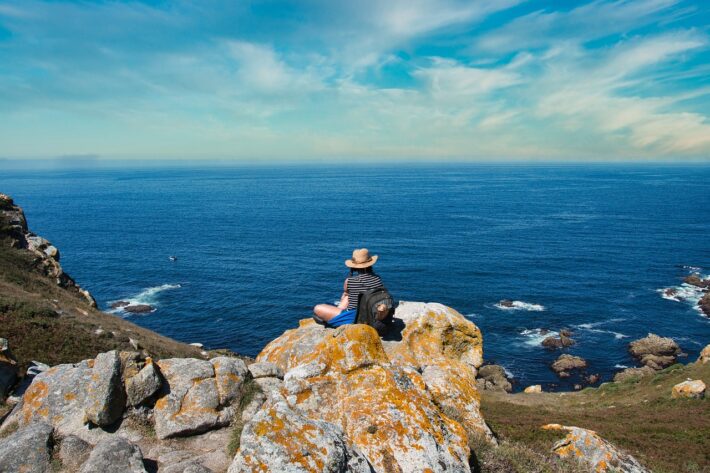
Located off the coast of Galicia in northwestern Spain, Islas Atlánticas National Park represents natural systems linked to coastal and continental shelf areas of the Euro-Siberian Region. The cliffs, shrublands, dunes, and beaches, as well as the different underwater environments (rocky, sandy, shelly), create a large mosaic of ecosystems on these islands and the waters that surround them.
This diversity of landscapes accommodates a large number of species: over 200 types of algae among which a large number of fish and mollusks seek refuge and breed, sea birds that nest on the cliffs and fish in shallow waters or plants surprisingly adapted to living among the sands of the dunes or in the narrow cracks of the cliffs.
Spain National Parks: Sierra de las Nieves
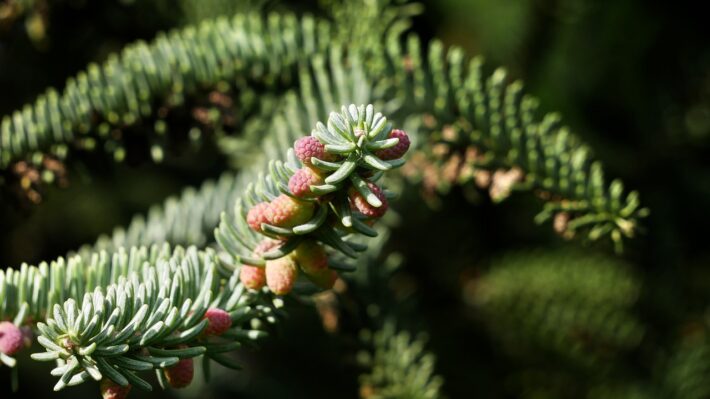
Sierra de las Nieves is located at the southwestern end of the Cordillera Bética, in the highest portion of the Serranía de Ronda (Málaga). Its name comes from the presence of snow on its high peaks, which used to be stored in “neveros” to distribute it during the summer months to the towns in the province.
The mountain range is the highest in western Andalusia, with the 1919-meter-high Pico Torrecilla. Its geologic and orographic complexity and the diversity of the substrate have resulted in vegetation characterized by its high diversity. Here we can still find the “pinsapo”, a tree from 65 million years ago that only survives in Southern Spain.
Whether you’re a nature lover or simply looking for a break from the city, Spain’s national parks and nature reserves are the perfect destination for a unique and unforgettable experience. With its rich diversity of landscapes and wildlife, there’s something for everyone in these stunning natural wonders.
Finally, if you are visiting Andalusia on your Spanish nature trip and want to discover a bit more about our cities too, then let us show you the best of Malaga, Seville or Granada in one of our tours and experiences!
Share your thoughts in the comment section below. And of course, don’t forget to subscribe to our newsletter if you want to stay tuned!

